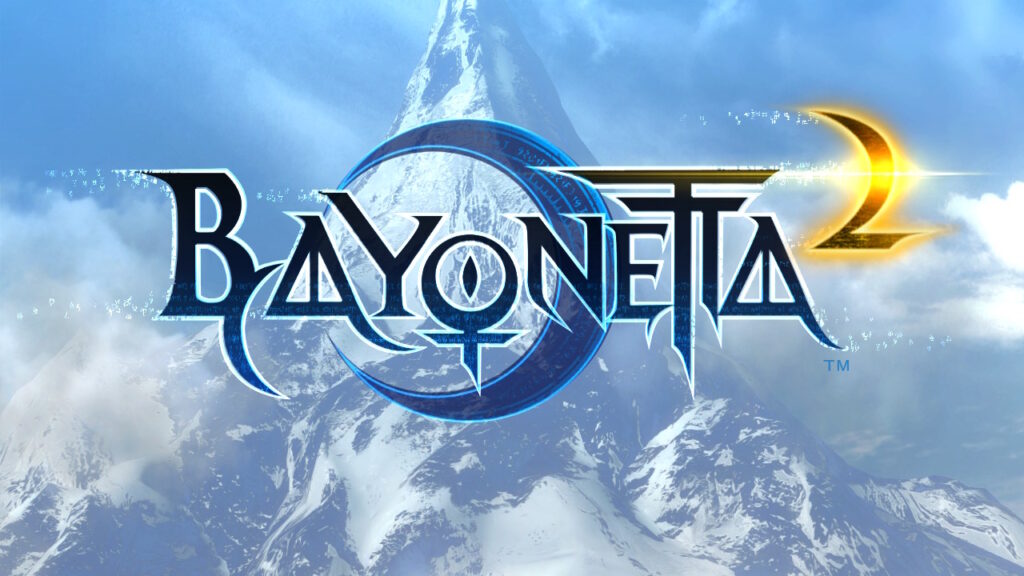
Bayonetta became a classic action game on the PlayStation 3 and Xbox 360. While it may not have pulled in the tremendous figures of Grand Theft Auto 4, it had a respectful presence among action fans due to its intricate gameplay. While PlatinumGames would continue to put their action stamp on the market, nobody ever expected Bayonetta to ever get a sequel.
Bayonetta 2 would shock everyone by being a Nintendo published exclusive on the Wii U, and eventually getingt a port to the Nintendo Switch. It has never left Nintendo’s vice grip despite cries from fans for it to come to their platform of preference.
Like its predecessor, Bayonetta 2 would be a demanding action game that doubled down on impressive effects and particles that would dazzle every scene. The poor Wii U did an admirable job at running this boisterous stylish-action game, but it wouldn’t be until Bayonetta 2 made the jump to Switch where it shined its brightest.
Bayonetta 2
Developer: PlatinumGames
Publisher: SEGA, Nintendo
Platforms: Wii U, Nintendo Switch (reviewed)
Release Date: October 24, 2014 (Wii U), February 16, 2018 (Switch)
Players: 1-2
Price: $29.99 (eShop), $59.99
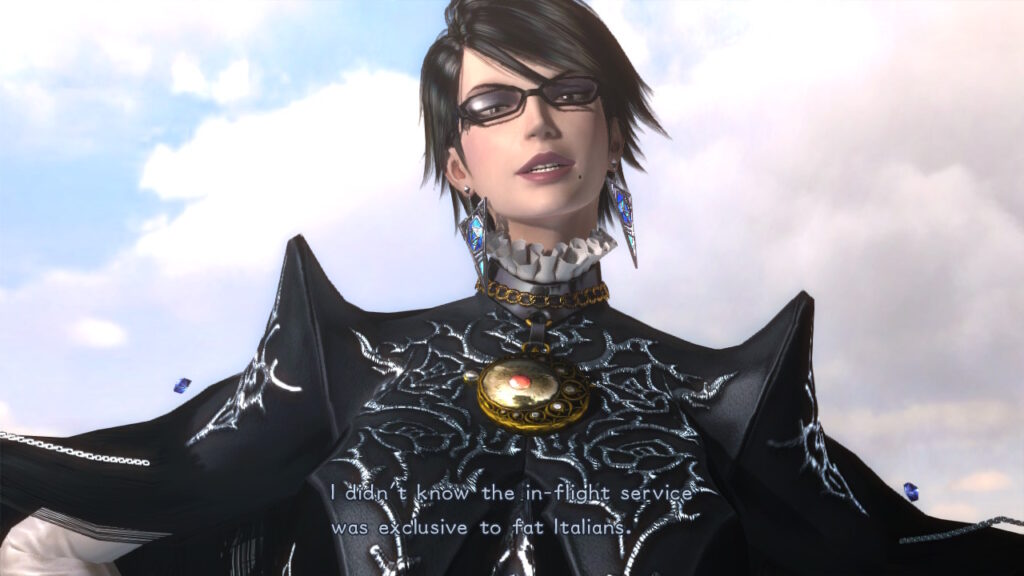
Bayonetta was no slouch with its visuals. The leading lady had tremendous attacks where countless particles and lighting effects would explode. Cutscenes would depict truly jaw-dropping action scenes that would leave players completely stupefied. Bayonetta 2 is very consistent with this style, and further pushes it in ways that make the game seem like it is a generation ahead.
Faces are more detailed than ever, and have a wider range of expression than they did in the first game. Color is richer and is liberally applied to make characters feel more like flesh and blood. Highlights in hair is especially convincing, and the shimmering gloss on freshly applied lipstick looks very natural.
There is a wider range of materials spread through out the world. Different kinds of cloth, stone, and metals with their distinctive patterns and styles gives Bayonetta 2 a very different feel than the Rococo-meets-manga aesthetic in the first game. The creatures of hell are very geometric and mechanical; covered in sharp angles and uncomfortable jagged edges.
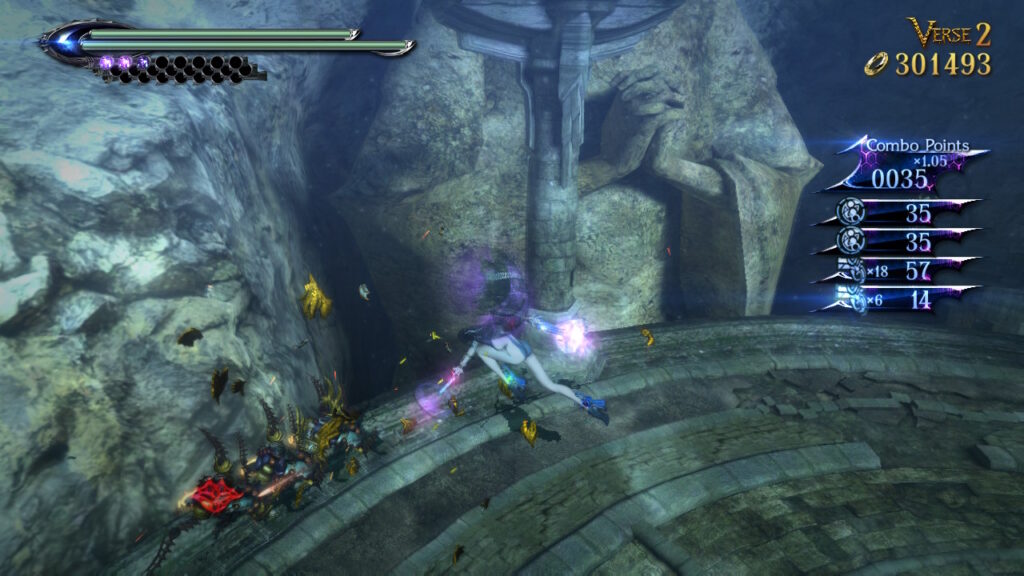
Enemy designs have gotten more surreal and bizarre. Bayonetta will find herself going toe to toe with hulking metallic monstrosities with flail arms, a gigantic muscular swordsman who’s head is in his sword, and different classes of centaurs. Faces of these goons will often be split and or doubled up on; sporting multiple sets of eyes and even a few noses.
With such absurd and unusual enemy designs, it could have been a disaster having to fight them. Thankfully, PlatinumGames did not miss a beat, and every movement and attack is animated with great care. Everything is readable despite the startling designs, and a lot of it is due to the thoughtful audible and visual cues that come with every telegraph.
As with the previous game, players are rewarded with witch-time for a perfectly timed dodge. This slows everything around Bayonetta so she is able to perform tremendous attacks, or to build up a fat combo multiplier. It is a classic risk vs reward flourish that keeps everyone on their toes when having to fight many threats at once.

Mastering the dodge mechanic is more important than ever, now that there are some enemies who are very timid and constantly block and can nastily break the flow. Some enemies demand that Ms. B waits for them to hit her, since using the dodge at that moment is the most reliable opening.
Enemies who behave like this become the bane of Bayonetta’s existence, and players will curse the developer’s name for implementing such an obnoxious enemy. They are most irritating when used in bonus challenge arenas, where a strict time limit is enforced.
Combat as a whole is very consistent with the original classic, but with some noticeable changes. Some of these adjustments are for the better, but there are some aspects that are a step backwards and were likely implemented to lower the bar of entry for less skilled players.
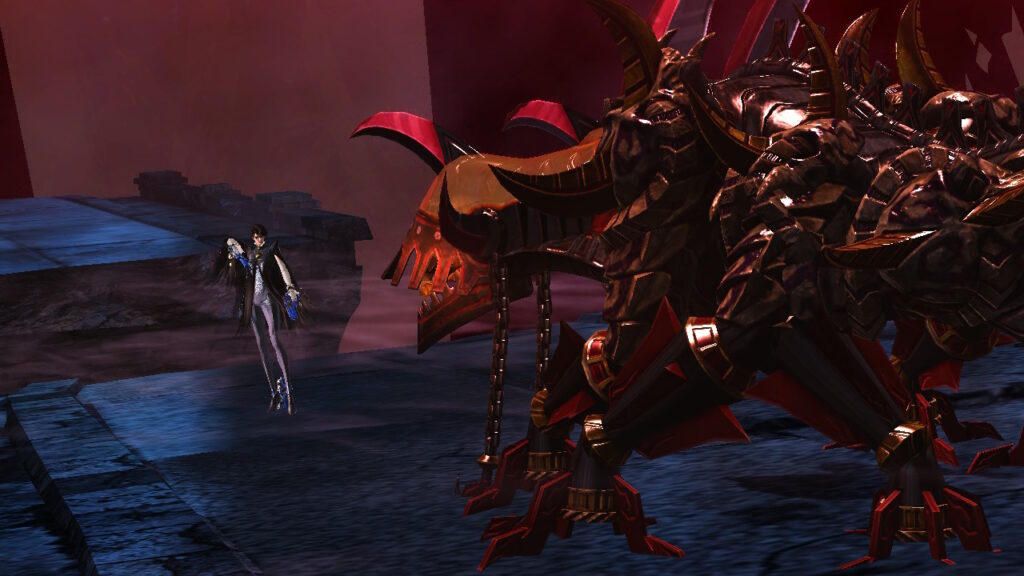
A new combat ability is functionally like the Devil Trigger from the Devil May Cry series, where Bayonetta’s attacks get super charged at the cost of her magic meter. All her basic attacks become enormous wicked weave strikes, giving angels and demons a very rough time.
This new ability is quite the spectacle, but also cheapens a lot of the challenge since it almost works like an “I win”, button. It also does not modify Bayonetta’s move-set at all, like how Dante’s Devil Form grants him a few unique abilities which adds to the skill ceiling. Umbran climaxes become mindless pummeling, and its inclusion was likely to make the game more accessible.
The combo system is also modified, making it even more easily exploited with certain weapons. Salamandra are pairs of devastating chainsaws which deal multiple hits per strike, making it very easy to get pure platinum ratings. Bayonetta 2 has less care put into balancing, and is more focused on making players feel good about themselves.
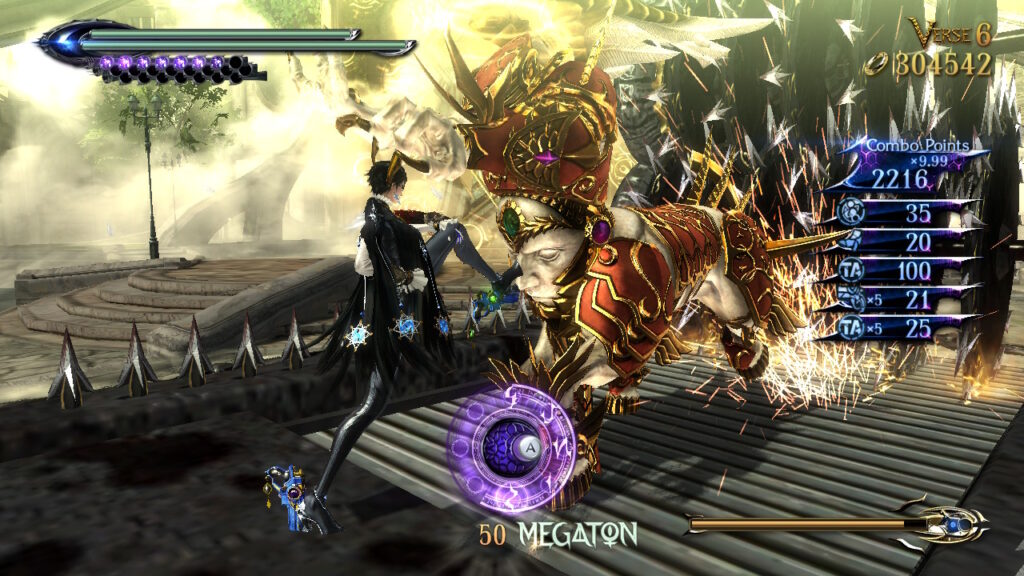
When not using Salamandra, most of the new weapons in Bayonetta 2 are disappointing. The ridiculous giant hammer Takemikazuchi is too sluggish to be reliable in battles that are typically really fast. The Rakshasa twin swords and Kafka bow are too weak, and have too few attacks to be enjoyable.
PlatinumGames seemingly acknowledges the shortcomings of the new weapons because the two favorite weapons from the first game, the katana Shuraba and Alruna whips, are bonus weapons (Alruna being the successor to Kulshedra). Even Bayonetta’s red Scarborough Fair is unlockable, and they still have their old move-set.
Bayonetta’s new Love is Blue are a snappy set of guns, with unique animations and an enormously long move list. Compared to Scarborough Fair, Love is Blue is too weak, and their best moves are too long to successfully execute in the hardest modes. Ms. B will almost always get interrupted by either having to dodge and parry, or getting sucker punched.
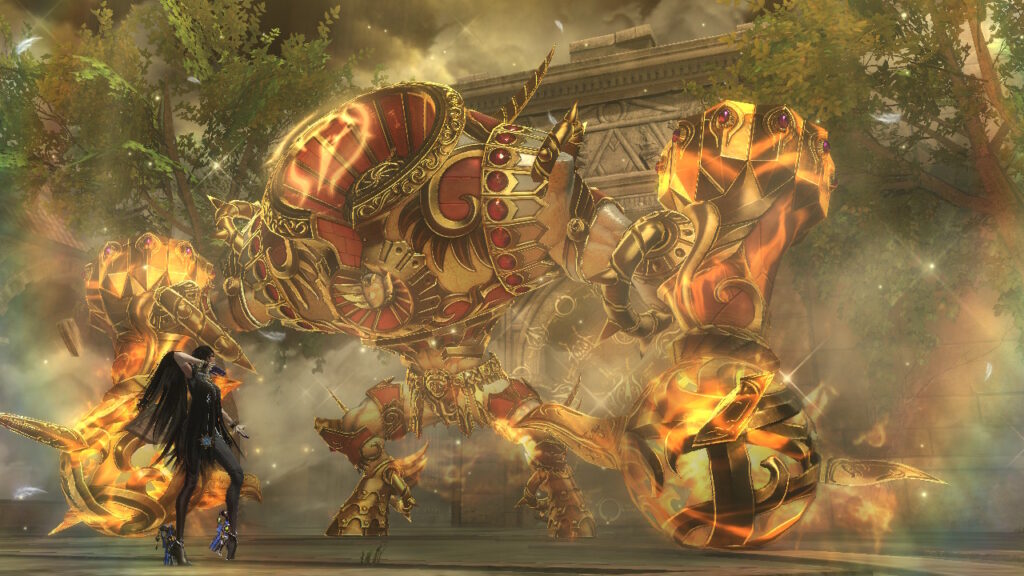
Bayonetta 2 has more emphasis on fighting than the first game. So much so it can become exhausting. Bayonetta had a lot of battling with huge angels, but it also broke up the encounters with calm moments of exploration and platforming. Sometimes there were some gimmick levels that did run too long, but served an important purpose of mixing things up.
The game almost constantly hammers the player with battles, mini bosses, and extra large bosses. Thankfully the instant-death quick-time-events are gone, but so are stages where Bayonetta would have to find keys to open doors, run through gauntlets of platforms, or use time reversal to restore a bridge.
Bayonetta’s underwater snake transformation is underutilized, and sadly cannot be worked into any combat functions like her panther form. If it weren’t for a few instances of hidden portals or secret items, most would completely forget that this transformation exists in the game.
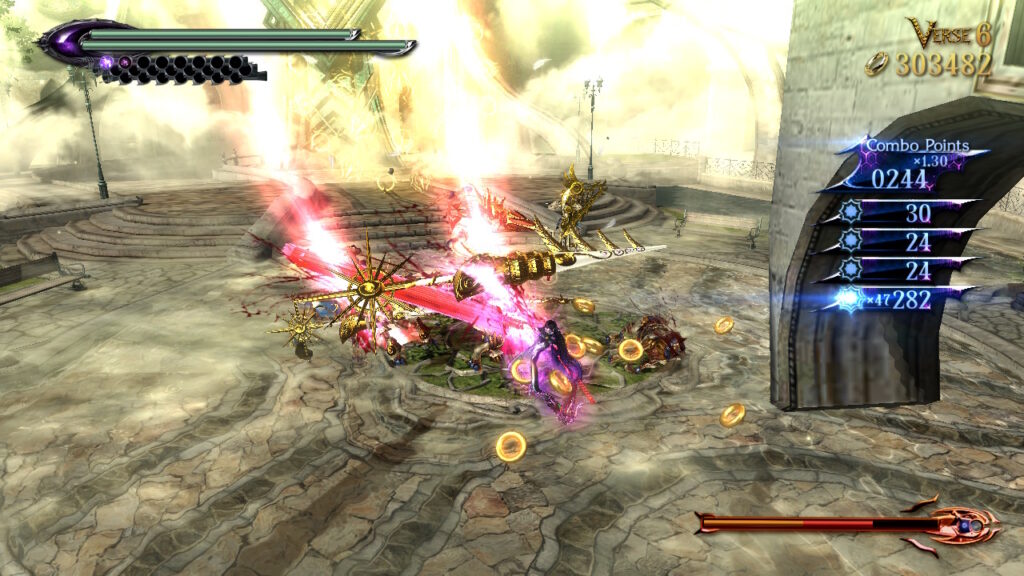
The few gimmicks that Bayonetta 2 has are a stage where she drives a mech that has a very limited move-set, where she fights on top of a fighter jet for a couple of minutes, and when she goes into the past. Going to the era of the witch hunts is easily the highlight of the experience, and also hints at what a Bayonetta game might be like if it had a cooperative story mode.
During this sequence, the developers go all out and bring back many of the enemies from the original game and expand on some past locations. It is a throwback level done perfectly for an area that was cleverly titled “City of Deja Vu”.
Time is a theme that has always been crucial to Bayonetta. Past, present, and future all collide between the first and second game. Bayonetta 2 has the story unfold before and after the first game, while also doing the whole Nier thing of recontextualizing major events.
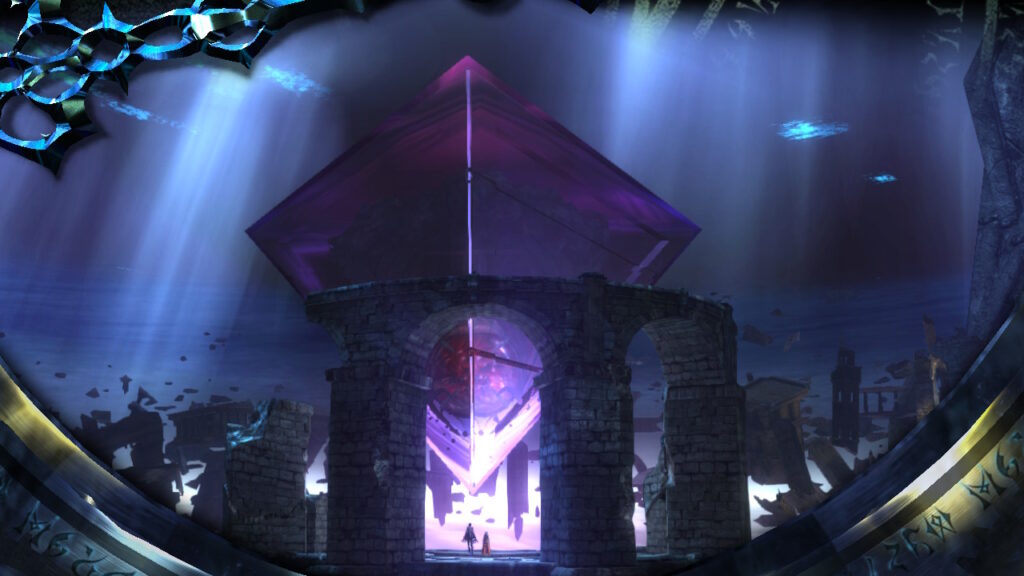
Bayonetta herself is given much more depth in this story. By the time the story concludes, players will see a new and vulnerable side to this woman. Hellena Taylor’s performance is grossly underrated for giving Bayonetta the humanity she has, and it could not be more present in this sequel. There are some moments that are heartbreaking to watch and Taylor makes it feel real.
The plot begins during Bayonetta’s Christmas shopping with her bestie, Jeanne. Angels show up to ruin the mood, and things escalate when Gomorrah, one of Bayonetta’s hair-demons, is turned against her and Jeanne gets taken to hell. Seeking the gates to both Paradiso and Inferno, Ms. B heads to Fimbulventr, where she meets Loki.
Loki is a half-pint punk with a penchant for Yu-Gi-Oh! sensibilities and knows how to tap into the heart of the cards. His connection to Bayonetta and how he is involved in the plot between both games becomes indispensable to her development. It is like the original game and the sequel are both yin and yang to a complete circle.
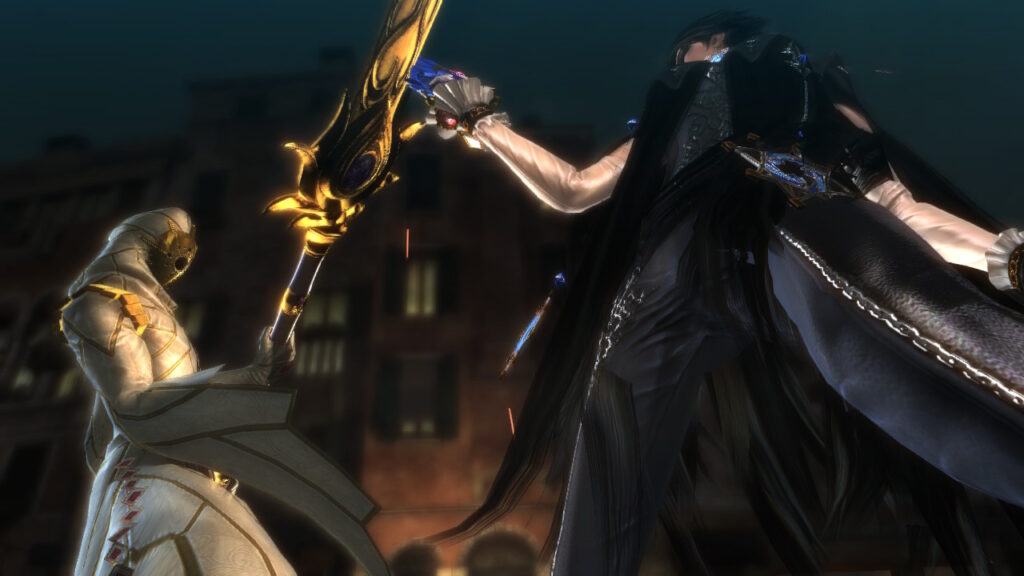
During the journey, Bayonetta will face some incredible boss battles. Each one comes with insane spectacle that would probably have been a final boss for lesser games, Bayonetta 2 has a bigger budget than its predecessor, and it isn’t afraid to let that money burn.
Some battles will have Ms. B flying and taking on an entire armada. Other moments will feature an entire army of bosses from the previous game, eager to settle the score from their past humiliation. It will be interesting to see how the inevitable Bayonetta 3 attempts to one up the intensity displayed here.
Even though these showdowns are a sight to behold, they are mostly for show, and are designed to look impressive instead of demanding the player to be impressive. The scoring system in Bayonetta 2 is very lenient, to the point it may as well not exist.
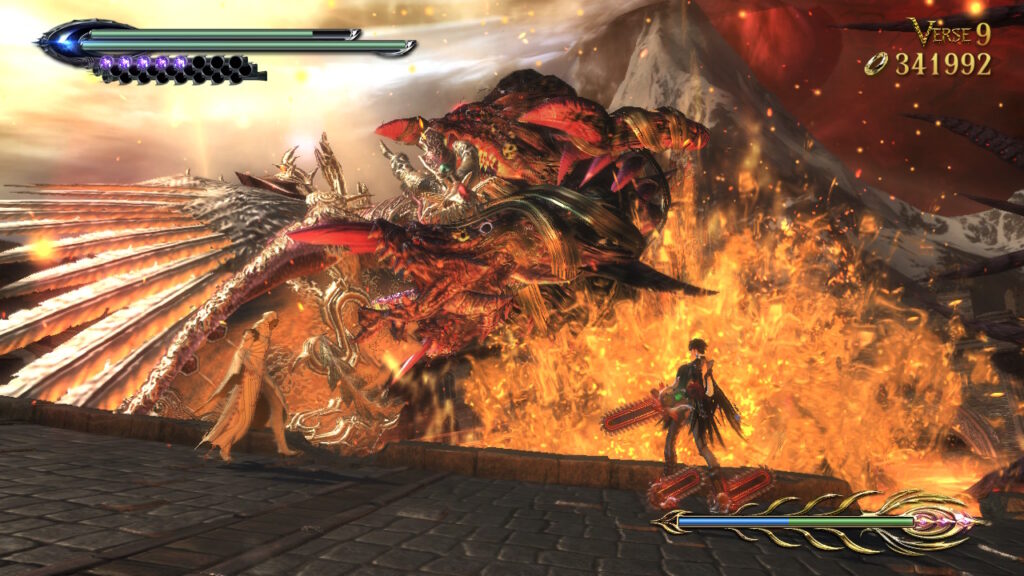
In the previous game, using health items or attack and defense boosters came with a penalty to Bayonetta’s score. Relying on invincibility lollipops would guarantee a low ranking when trying to cheese the game for easy halos.
Bayonetta 2 does not penalize the use of items at all, further emphasizing that this sequel is made more for casual play. Items are easily acquired, since the components to craft the useful consumables are plentiful, and can be infinitely grinded by replaying stages.
A lot of the challenge that exists in Bayonetta 2 becomes trivial when users can so easily exploit the system like this. The rewards become less impressive as a result, since any casual player can cheese a high score on the harder modes with easily stockpiled power-up lollipops.
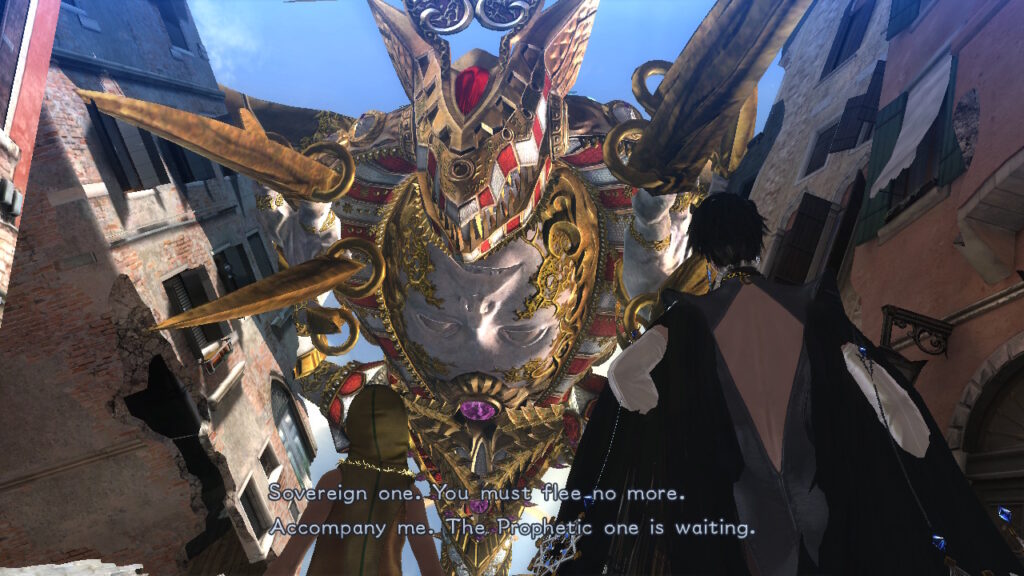
Despite the lower challenge, it is hard to not be impressed by the effort put into the scope and scale in Bayonetta 2′s production values. Unlike the first game, there are no recycled stages or bosses. PlatinumGames spared no expense at filling out each area with unique vistas and points of interest.
One unfortunate hold over from the first game that does make a return are the low-effort cutscenes that use motionless 3D models. Does this return because it is now a stylistic choice that is associated with Bayonetta‘s aesthetic? Or was it a cost cutting measure to allow the developers to further focus on the more important aspects of the game?
While the latter was certainly true for the original game, it is much less clear with Bayonetta 2. The scenes that do get attention are as bombastic as ever, and it is still disappointing to see the game devolve into the slideshow style when the visuals have gotten so much more polished.
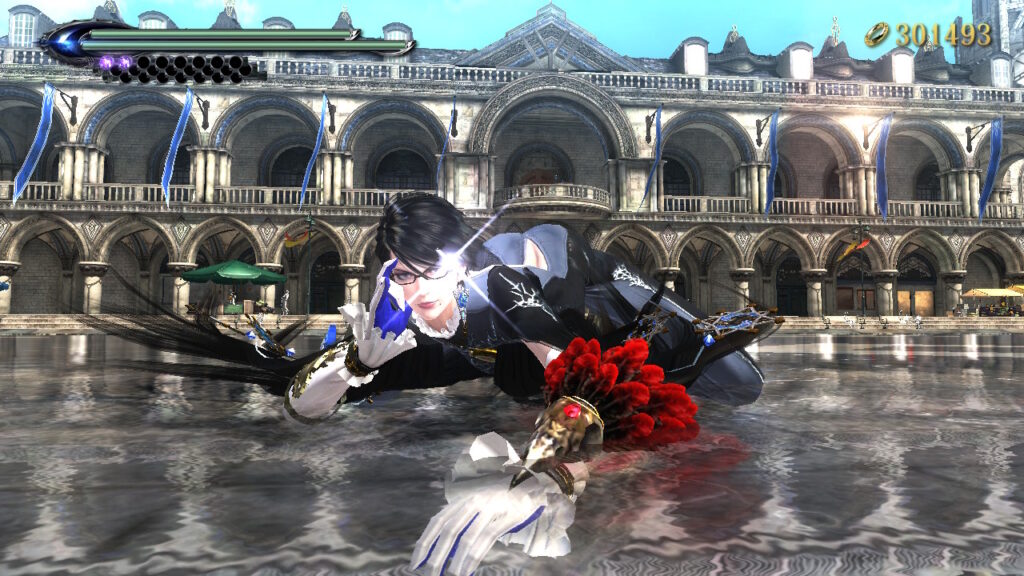
Bayonetta 2 makes some headway for the franchise by implementing a variation of the “Bloody Palace” mode from the Devil May Cry series. The difference being that Bayonetta 2 offers a co-op mode that can be done online or LAN. This adds a lot of value and also comes with a few extra playable characters with their own unique properties.
Rodin stands out the most from the cast, since he has no witch-time and relies on a shield instead of dodging. He also has the least range since he uses his bare hands instead of guns or melee weapons, making him the most challenging and technical character to master in the Tag-Team Climax modes.
The amount of post-game content is very generous considering how much the main campaign is packed with ideas. The main weapons, combined with the unlockable legacy weapons from the first game, fill out Bayonetta 2 into having a huge selection of options and possibilities.
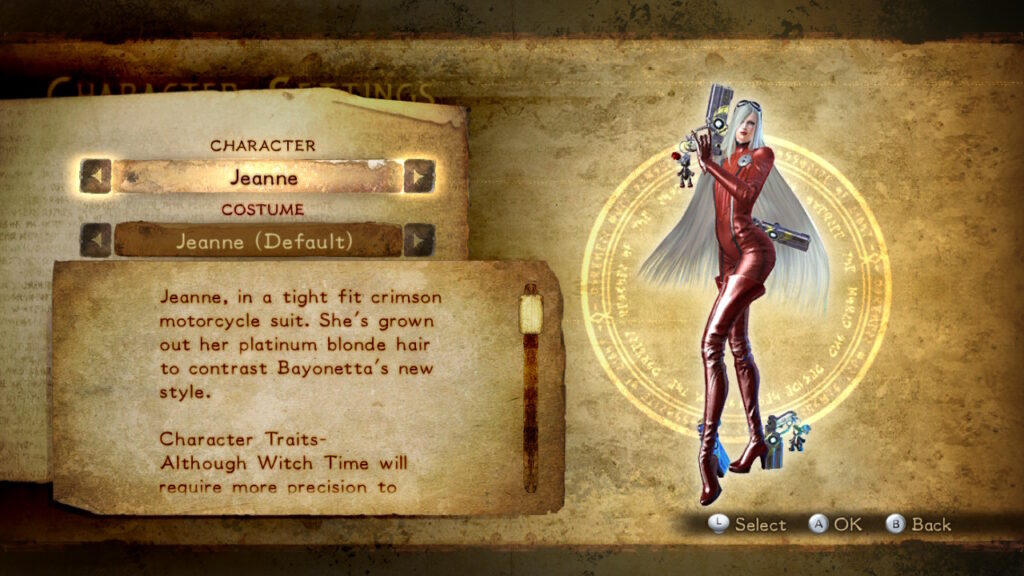
Jeanne and a secret character further add replayability. They come with their own quirks and nuances that demand higher skill. Jeanne in particular has a much more narrow window to perform a perfect dodge and takes more damage. Her wicked weave attacks are more powerful than Bayonetta’s, and since her perfect dodge is harder to pull off, she gains more points while in witch-time.
The boys at PlatinumGames cared enough to allow players to dress Jeanne or Bayonetta up in different outfits. Rodin’s shop has a substantial amount of options to dump halos into, long after the game has been beaten. Fans who prefer Bayonetta’s original look will be happy to see it is for sale.
It may take about 10 to 15 hours to beat Bayonetta 2, but there is enough extras and bonuses to work towards to keep everyone playing past the 40 hour mark. As far as stylish-action games go, this one ranks high for its density of content and extras.
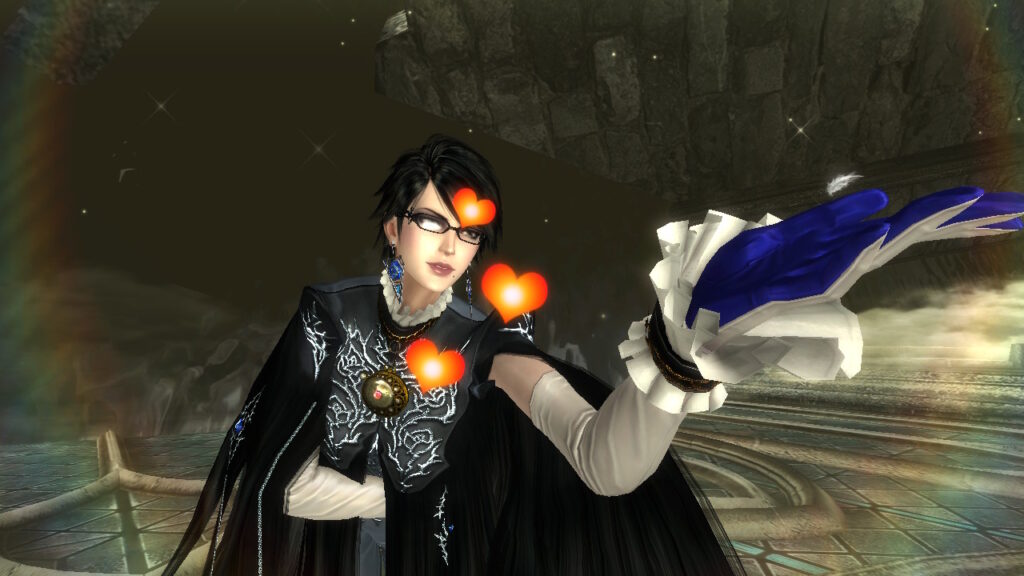
On the Wii U, Bayonetta 2 stressed the hardware in a big way. The 60 fps target was only sometimes met, with the large scale aerial battles and huge bosses taxing the console the hardest. On Switch, things are smoothed out, and load times have been nominally reduced. When the heat is on, the action maintains stability most of the time.
It is unlikely that Bayonetta 2 will ever leave Nintendo’s hold. Fans who refuse to own a Nintendo console are missing out on one of the better action games made in the last decade. The modern and more advanced Devil May Cry V wasn’t able to reach the outrageous heights of absurd action seen here.
It may not be the perfect sequel, but Bayonetta 2 is a satisfying one nonetheless. Some steps were taken forward and a couple backwards; resulting in a very polished and good looking game with some design choices that might annoy hardcore fans of the original. Hopefully, Bayonetta 3 only takes steps forward.
Bayonetta 2 was reviewed on Nintendo Switch using a personal copy. You can find additional information about Niche Gamer’s review/ethics policy here.